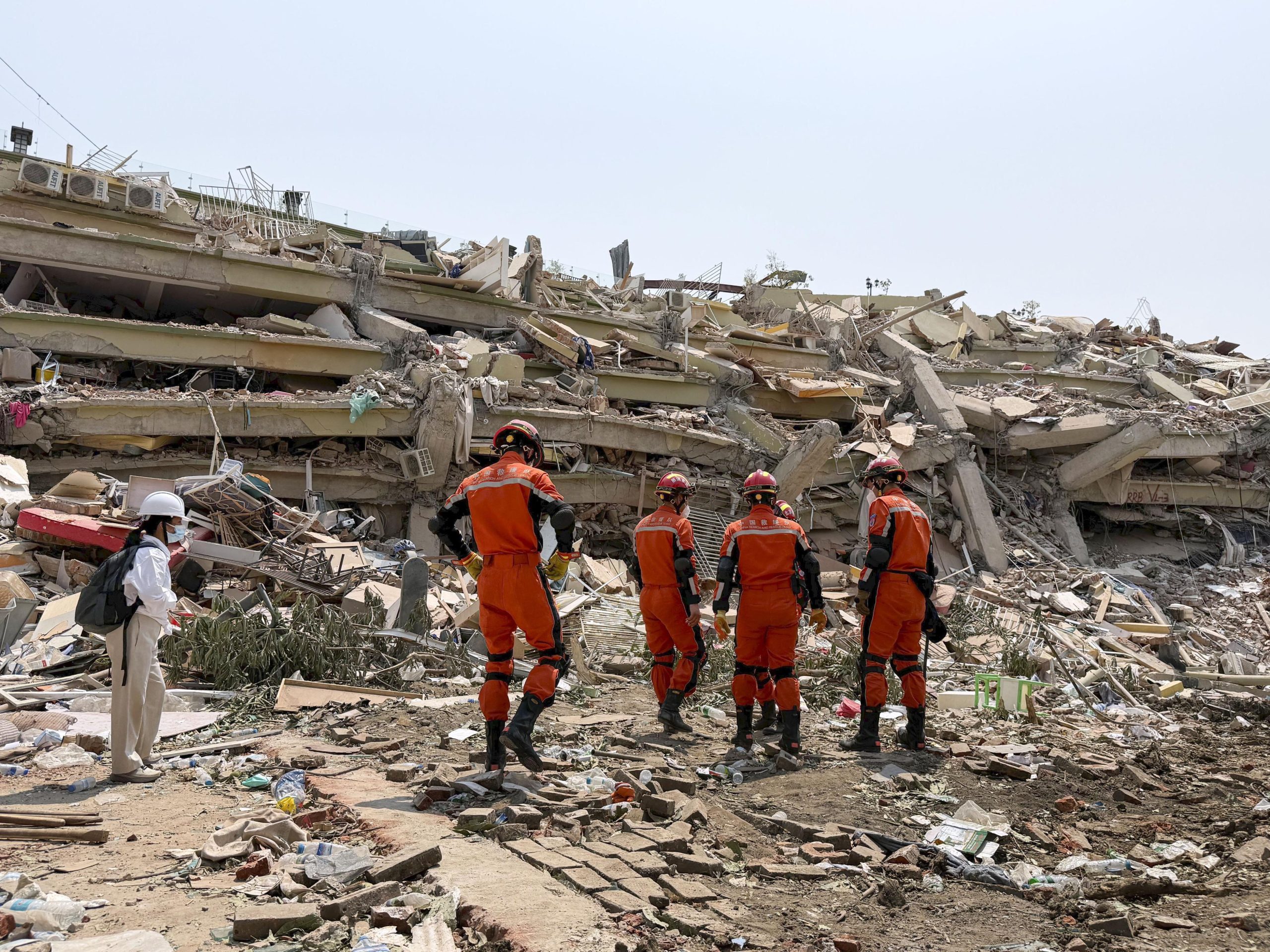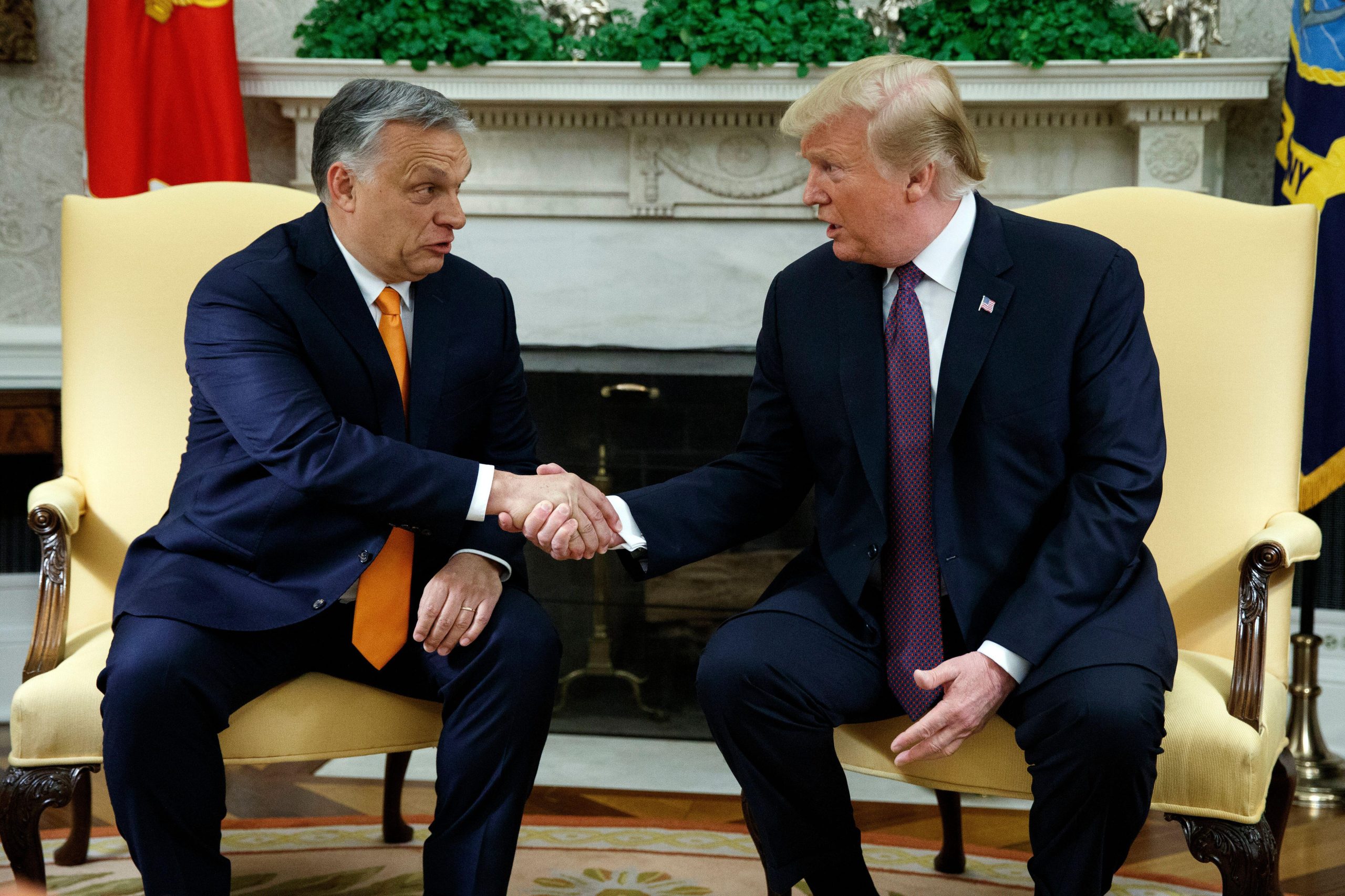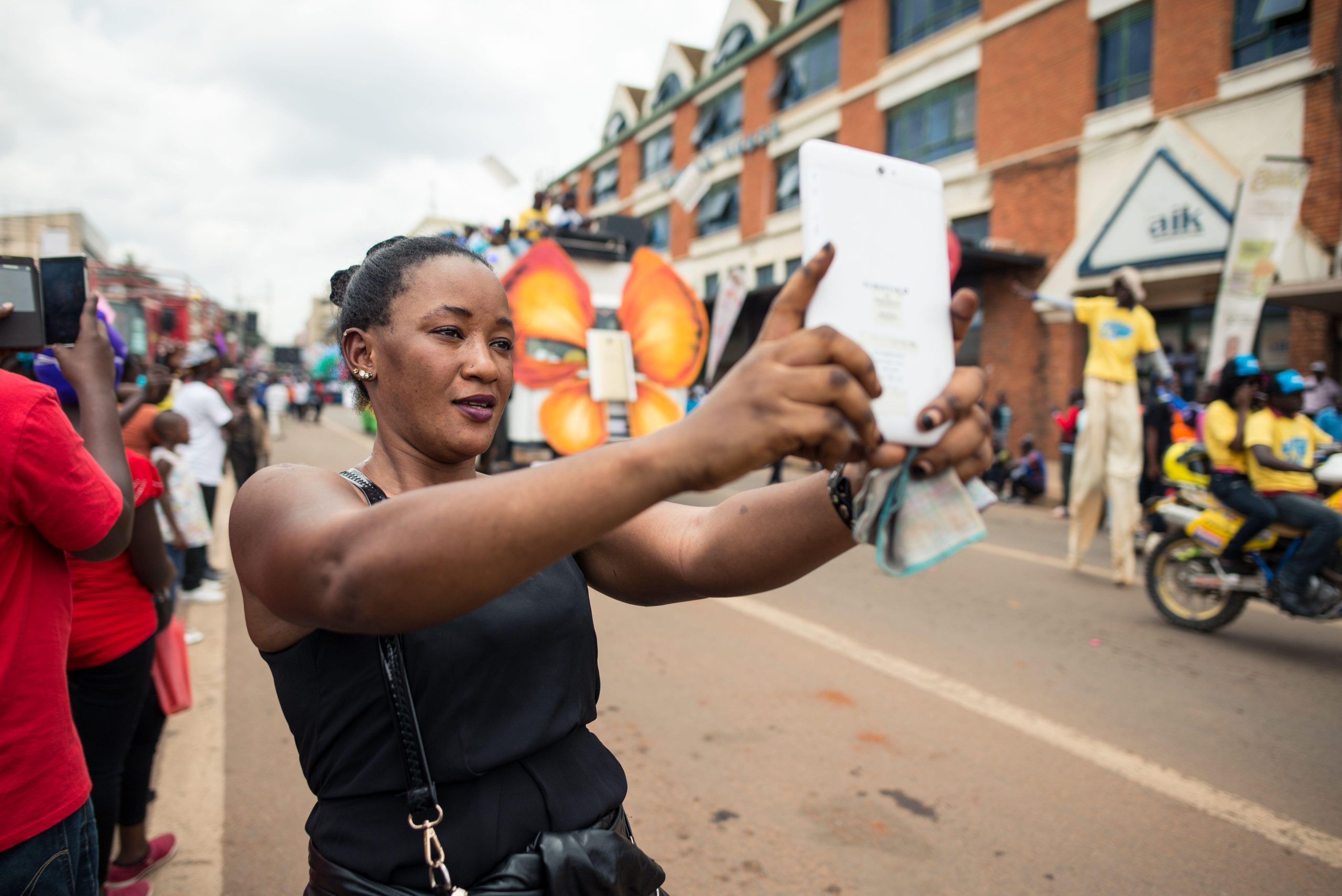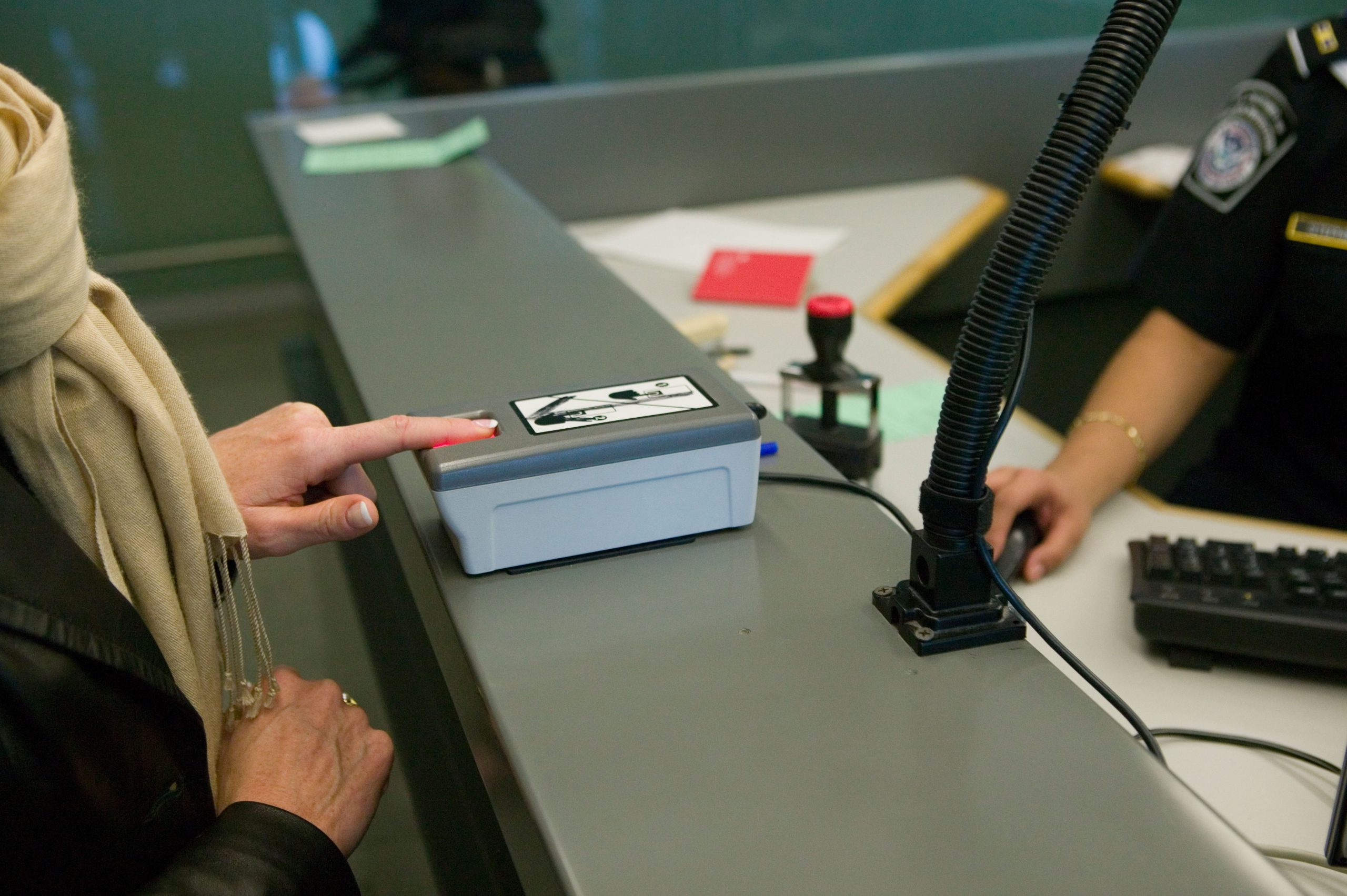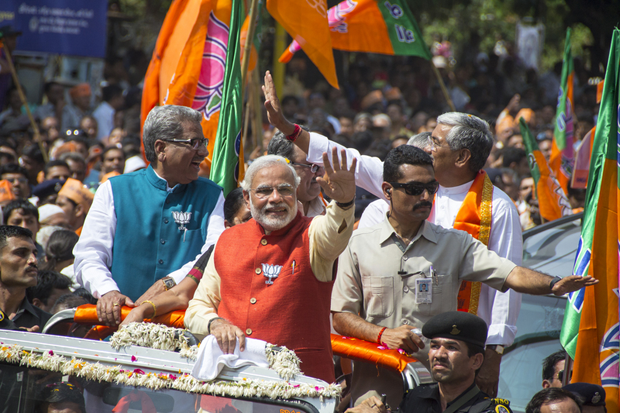
Gujarat Chief Minister and BJP prime ministerial candidate Narendra Modi filed his nomination papers from Vadodara Lok Sabha seat amid tight security on April 6. (Photo: Nisarg Lakhmani / Demotix)
Electioneering for the Indian elections of 2014 has reached a fever pitch. Never before in the history of modern India has it seemed likely that the country is ready to cut its cord with the Congress Party’s Gandhi family, and never before has its chief opposition party, the Bharatiya Janta Party (BJP) been projected as the sole inheritance of one man – Narendra Modi.
The “greatest show on Earth” – the Indian elections – is underway. There are 37 days of polling across 9 states, with a 814 million strong electorate, and more than 500 political parties to choose from. The hoardings all seem to scream the “development” agenda, but unfortunately in India, this conversation seems to be skating on thin ice. Cracks quickly appear, and beneath the surface, political parties seem to be indulging in the same hate speech, communal politicking and calculations that work to polarise the electorate and garner votes.
Hate speech in India is monitored by a number of laws in India. These are under the Indian Penal Code (Sections 153[A], Section 153[B], Section 295, Section 295A, Section 298, Section 505[1], Section 505 [2]), the Code of Criminal Procedure (Section 95) and Representation of the People Act (Section 123[A], Section 123[B]). The Constitution of India itself guarantees freedom of expression, but with reasonable restricts. At the same time, in response to a Public Interest Litigation by an NGO looking to curtail hate speech in India, the Court ruled that it cannot “curtail fundamental rights of people. It is a precious rights guaranteed by Constitution… We are 128 million people and there would be 128 million views.” Reflecting this thought further, a recent ruling by the Supreme Court of India, the bench declared that the “lack of prosecution for hate speeches was not because the existing laws did not possess sufficient provisions; instead, it was due to lack of enforcement.” In fact, the Supreme Court of India has directed the Law Commission to look into the matter of hate speech — often with communal undertones — made by political parties in India. The court is looking for guidelines to prevent provocative statements.
Unenviably, it is the job of India’s Election Commission to ensure that during the elections, the campaigning adheres to a strict Model Code of Conduct. Unsurprisingly, the first point in the EC’s rules (Model Code of Conduct) is: “No party or candidate shall include in any activity which may aggravate existing differences or create mutual hatred or cause tension between different castes and communities, religious or linguistic.” The third point states that “There shall be no appeal to caste or communal feelings for securing votes. Mosques, churches, temples or other places of worship shall not be used as forum for election propaganda.”
This election season, the EC has armed itself to take on the menace of hate speeches. It has directed all its state chief electoral officers to closely monitor campaigns on a daily basis that include video recording of all campaigns. Only with factual evidence in hand can any official file a First Information Report (FIR), and a copy of the Model Code of Conduct is given along with all written permissions to hold rallies and public meetings.
As a result, many leaders have been censured by the EC for their alleged hate speeches during the campaign. The BJP’s Amit Shah was briefly banned by the EC for his campaign speech in the riot affected state of Uttar Pradesh, that, Shah had said that the general election, especially in western UP, “is one of honour, it is an opportunity to take revenge and to teach a lesson to people who have committed injustice”. He has apologized for his comments. Azam Khan, a leader from the Samajwadi Party, was banned from public rallies by the EC after he insinuated in a campaign speech that the 1999 Kargil War with Pakistan had been won by India on account of Muslim soldiers in the Army. The EC called both these speeches, “highly provocative (speeches) which have the impact of aggravating existing differences or create mutual hatred between different communities.”
Other politicians have jumped on the bandwagon as well. Most recently, the Vishwa Hindu Parishad’s Praveen Togadia has been reported as making a speech targeting Muslims who have bought properties in Hindu neighborhoods. “If he does not relent, go with stones, tyres and tomatoes to his office. There is nothing wrong in it… I have done it in the past and Muslims have lost both property and money,” he has said. There was the case of Imran Masood of the Congress who threatened to “chop into pieces” BJP Prime Ministerial candidate Narendra Modi – a remark that forced Congress’s senior leader Rahul Gandhi to cancel his rally in the same area following the controversy that erupted. Then there is Modi-supporter Giriraj Singh who has said that “people opposed to Modi will be driven out of India and they should go to Pakistan.” In South India, Telangana Rashtra Samithi (TRS) president K Chandrasekhar Rao termed both TDP and YSR Congress (YSRCP) as ‘Andhra parties’ and urged the people of Telangana to shunt them out of the region. The Election Commission has directed district officials to present the video footage of his speeches at public meetings, in order to determine punishment, if needed. Karnataka Chief Minister Siddaramaiah has been served notice by the EC for calling Narendra Modi a “mass murderer”; a reference to his alleged role in the Gujarat riots of 2002.
Shekhar Gupta, editor of the national paper, the Indian Express has published a piece ominously titled “Secularism is Dead,” but instead appeals to the reader to have faith in Indian democracy far beyond what some petty communal politicians might allow. The fact that the BJP’s Prime Ministerial candidate is inextricability linked in public consciousness to communal riots in his home state of Gujarat has only compounded speeches over and above what people believe is the communal politics of the BJP that stands for the Hindu majority of India. In contrast, many believe that by playing to minority politics, the Congress indulges in a different kind of communal politics. And then there are countless regional parties, creating constituencies along various caste and regional fissures.
However, perhaps the last word can be given to commentator Pratap Bhanu Mehta who writes of the Indian election: “But what is it about the structures of our thinking about communalism that 60 years after Independence, we seem to be revisiting the same questions over and over again? Is there some deeper phenomenon that the BJP-Congress system seems two sides of the same coin to so many, even on this issue? The point is not about the political equivalence of two political parties. People will make up their own minds. But is there something about the way we have conceptualised the problem of majority and minority, trapped in compulsory identities, that makes communalism the inevitable result?”
It is this inevitability of communal diatribe, of the lowest common denominators in politics that Indian politics need to rise above. This is being done, one comment at a time, as long as the Election Commission is watching. The bigger challenge lies beyond the results of 16 May, 2014.
This article was posted on 22 April 2014 at indexoncensorship.org

